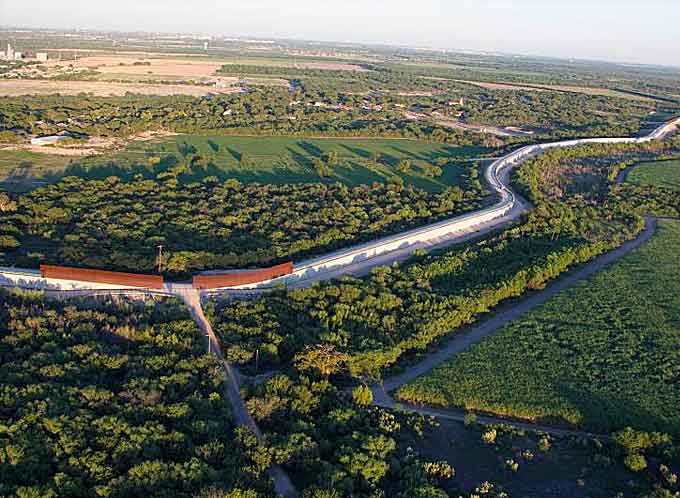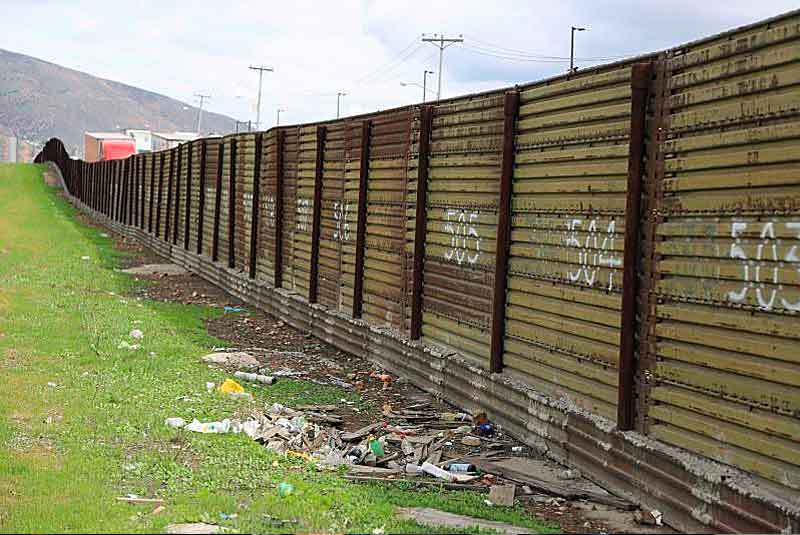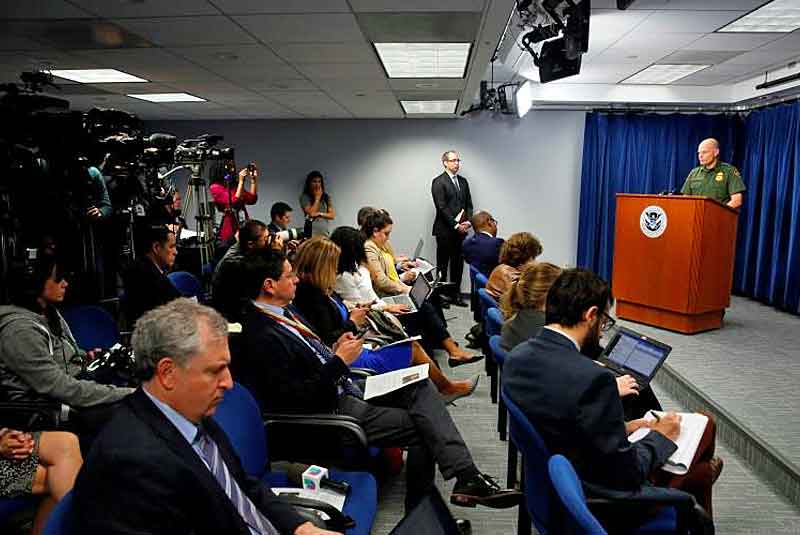
Construction of the border wall is underway, as several projects begin to take shape along the Southwest border.
One project will begin within days, according to Ronald Vitiello, U.S. Customs and Border Protection’s acting deputy commissioner.
Vitiello also announced wall projects in El Centro, San Diego, Santa Teresa and Rio Grande Valley.
“We’re on track to replace 20 miles of primary vehicle barrier in Santa Teresa, New Mexico,” he told reporters during a Friday afternoon news conference in Washington, D.C. “Ground breaking is scheduled for early April.”
(See remarks by CBP Acting Deputy Commissioner Ronald D. Vitiello from the news conference in Washington, D.C. on Friday. Courtesy of LIVE ON-AIR NEWS and YouTube. Posted on Mar 30, 2018)
The projects span the Southwest border from San Diego to the Rio Grande Valley Sector in Texas.
In San Diego, 14 miles of outdated steel plate barrier will be replaced with a bollard structure, hollow steel beams filled with concrete and steel rods.
The bollard design provides agents with needed visibility into Mexico while improving protection.

At least two miles of the border barrier in Calexico, California, is already being replaced with 30-foot bollard wall along with four miles of bollard wall in El Paso.
Closing gaps along the border in the Rio Grande Valley Sector is also part of the border wall project.
“We’re building 35 new gates along a stretch of 55 miles of existing border wall,” Vitiello said, which is tentatively scheduled to start in October 2018.
Along those areas, the barrier is further away from the Mexican border.
The gates close gaps in the wall while permitting the U.S. Border Patrol, emergency vehicles and landowners with property on the southern side of the barrier access through an automatic gate.
The Rio Grande Valley Sector will also benefit from 25 miles of new levee wall along the Rio Grande River and eight miles of bollard wall in Starr County, Texas.
When fully funded, about 1,000 of almost 2,000 of the U.S. border with Mexico will have border wall and other critical infrastructure.
(Learn More about the CBP. U.S. CBP has one of the most complex, far-reaching border security missions in the world. CBP is responsible for protecting our borders, while facilitating lawful international travel and trade. Every single day, more than a million people arrive at U.S. land, air and seaports of entry, along with six and a half billion dollars in imported goods. Courtesy of U.S. Customs and Border Protection and YouTube. Posted on Mar 21, 2018)
Vitiello thanked the Trump Administration for their leadership and commitment to border security.


















